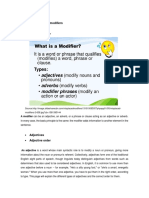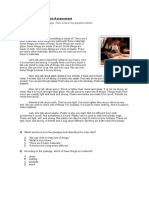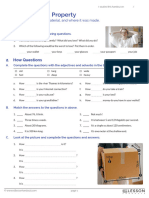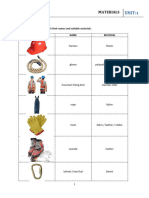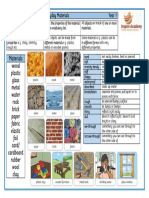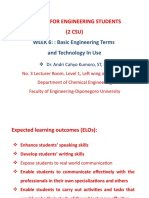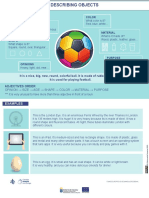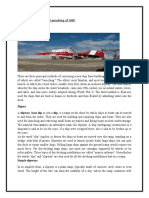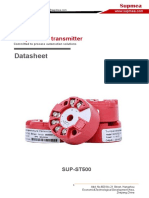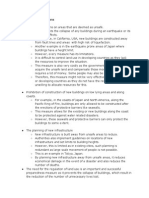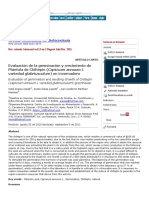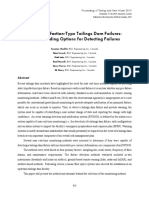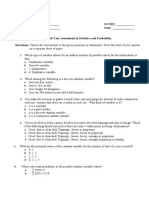0% found this document useful (0 votes)
11 views6 pagesDescribing Objects PRINT
The document provides a comprehensive guide on describing objects, focusing on aspects such as function, components, characteristics (shapes, colors, dimensions, materials), position, and connections between parts. It includes examples and exercises to illustrate how to effectively describe objects in English. The content is structured to aid learners in understanding and applying descriptive language in various contexts.
Uploaded by
arnoldandrew774Copyright
© © All Rights Reserved
We take content rights seriously. If you suspect this is your content, claim it here.
Available Formats
Download as PDF, TXT or read online on Scribd
0% found this document useful (0 votes)
11 views6 pagesDescribing Objects PRINT
The document provides a comprehensive guide on describing objects, focusing on aspects such as function, components, characteristics (shapes, colors, dimensions, materials), position, and connections between parts. It includes examples and exercises to illustrate how to effectively describe objects in English. The content is structured to aid learners in understanding and applying descriptive language in various contexts.
Uploaded by
arnoldandrew774Copyright
© © All Rights Reserved
We take content rights seriously. If you suspect this is your content, claim it here.
Available Formats
Download as PDF, TXT or read online on Scribd
/ 6
































